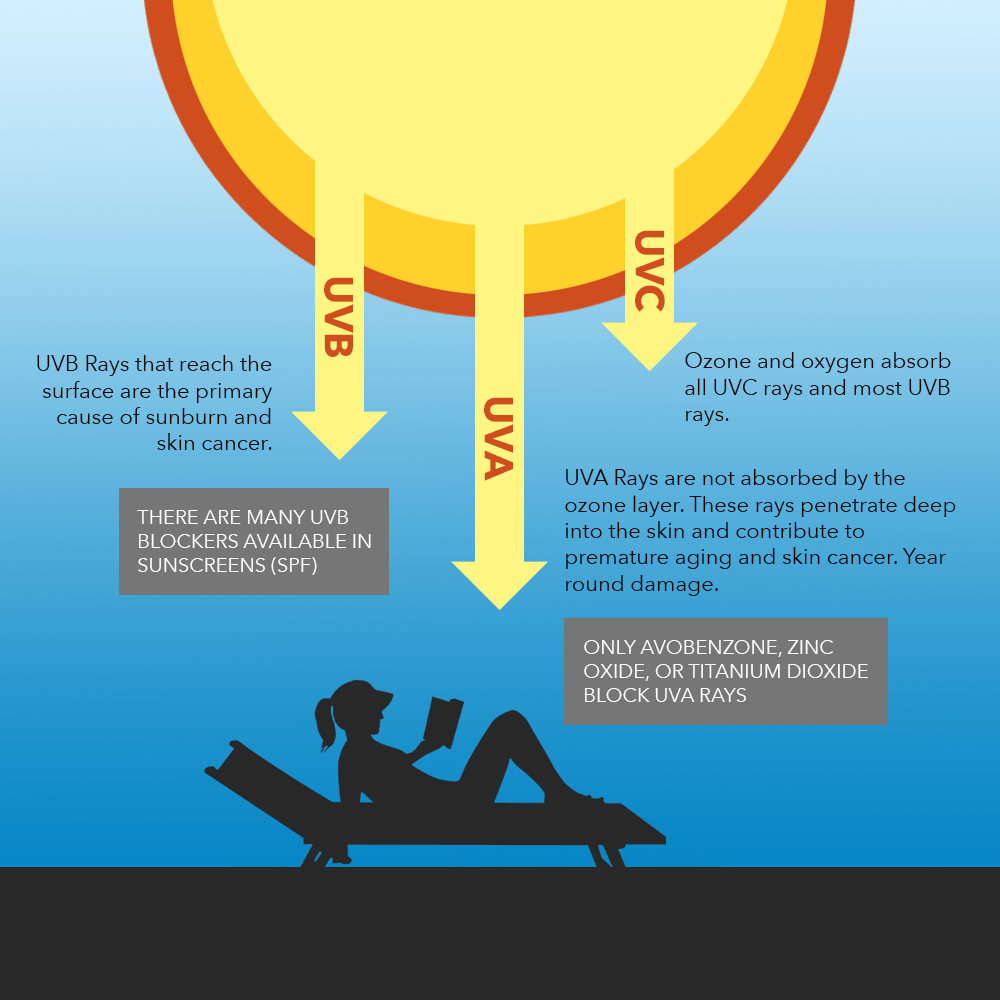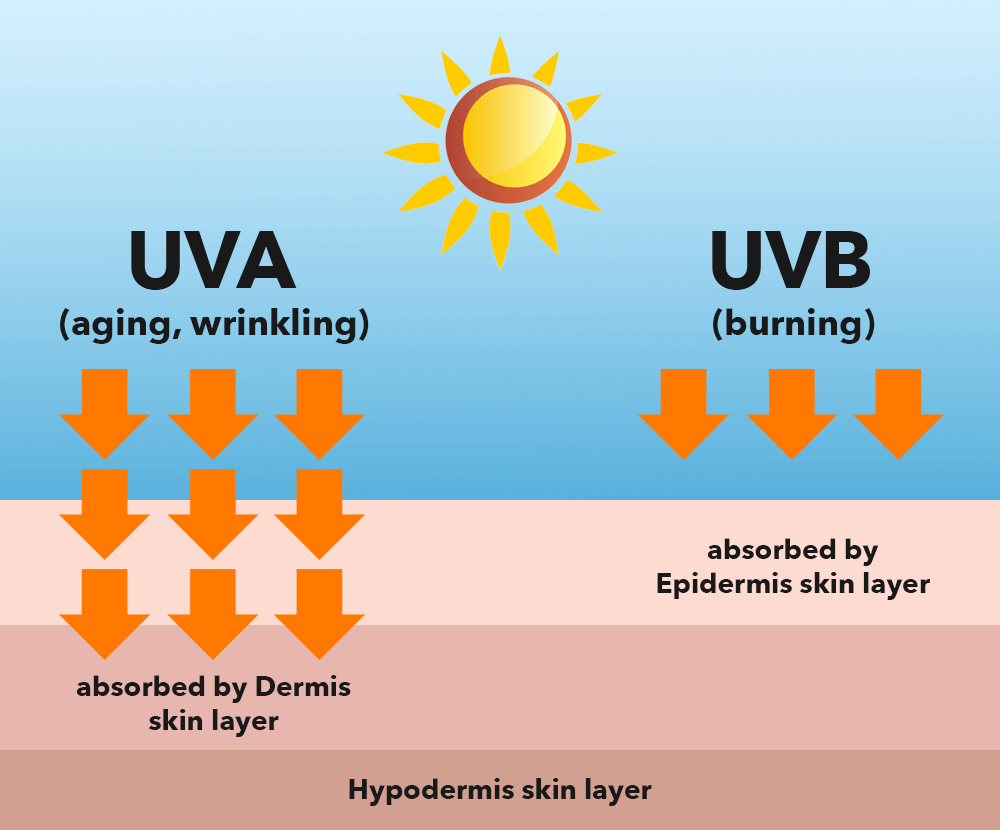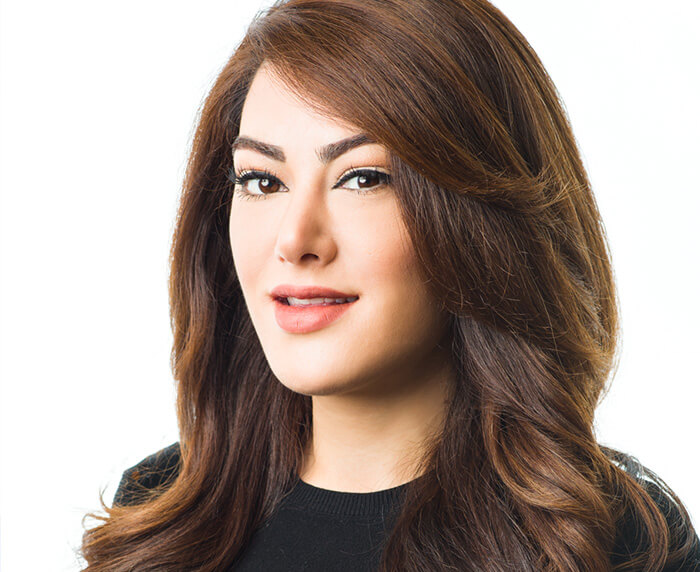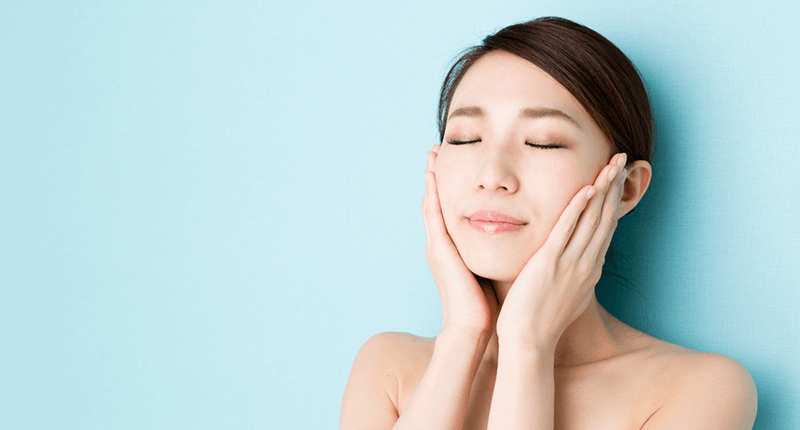
My 11 years of experience as a skin care specialist in Vancouver has made me slightly, okay, really, protective of my skin. I realize that reversing the signs of aging can be both time consuming and costly so I’ve incorporated all of the possible ways to keep the sun’s rays out of my personal space into my routine.
In my younger days, I only wore sunscreen when it was super sunny out until I noticed that my once upon a time blemishes had become permanent marks on my face. That’s when I started wearing sunscreen rain or shine. My occasional breakouts were leaving my pores open and giving the sun’s rays leverage on my skin.
Ever since I became more attentive to my skin, my sunspots and acne scars went away thanks to my skin care regimen. It’s definitely worth every minute spent applying because my skin is more supple and uniform than ever. I want to share my anti-aging armor with you, as well as a few of my favorite skin care products for UV protection. But first, a lesson in sun damage!
How UVA and UVB Rays Affect the Skin
I know most of us are diligent with our sunscreen when it’s sunny out, which is rare in Vancouver. But most of our patients at NuAGE Laser are surprised to hear their skin gets the most damage on rainy or cloudy days. This is because clouds actually magnify the sun’s rays, much like how our skin gets tanner during the summer months while swimming. Plus, since there are more cloudy days than sunny ones, the damage from a lack of protection accumulates.

We all know that the sun is responsible for premature aging but most of us don’t know that:
- UVA is what requires our attention because it’s the one responsible for lines and spots
- UVA rays are out 365 days a year, rain or shine!
- UVA penetrates deeper into the skin than UVB
- UVA also generates free radicals in living skin, which contributes to skin damage, wrinkles and skin cancer
- UVB rays are at their peak on sunny days but still around on rainy days
Get Rid of Your Sun / Dark Spots - Book Your Free Consultation Today
Most of us are exposed to large amounts of UVA throughout our lifetime. UVA rays account for up to 95 percent of the UV radiation reaching the Earth’s surface. Although they are less intense than UVB rays, UVA rays are 30 to 50 times more prevalent. They are present with relatively equal intensity during all daylight hours throughout the year and can penetrate clouds and glass.
UVA, which penetrates the skin more deeply than UVB, has long been known to play a major part in skin aging and wrinkling (photo-aging), but until recently scientists believed it did not cause significant damage in areas of the epidermis (outermost skin layer) where most skin cancers occur. Studies over the past two decades, however, show that UVA damages skin cells called keratinocytes in the basal layer of the epidermis where most skin cancers occur. (Basal and squamous cells are types of keratinocytes.) UVA contributes to and may even initiate the development of skin cancers.
UVA is the dominant tanning ray and we now know that tanning, whether outdoors or in a salon, causes cumulative damage over time. A tan results from injury to the skin’s DNA. The skin darkens in an imperfect attempt to prevent further DNA damage. These imperfections, or mutations, can lead to skin cancer and premature aging.

Skin Care Ingredients to Protect Against UV Rays
Now that we know what we’re up against, let’s look at the ways we can prevent sun damage in the form of lines and spots. If you’re looking for how to prevent melasma, sun spots and scars, the best defense is a great offense. At NuAGE Laser we always recommend the following four types of products:
- Vitamin C to build new and healthy skin cells
- Peptides to strengthen and protect the out layers of the skin from free radicals
- Chemical sunscreen to shield and absorb the sun’s damaging rays
- Physical sunscreen to deflect and reflect any rays that may pass between the gaps in your chemical sunscreen.
Vitamin C
The antioxidant properties of vitamin C (ascorbic acid) and its role in collagen synthesis make it a vital molecule for skin health. Dietary and topical ascorbic acid have beneficial effects on skin cells and some studies have shown that vitamin C may help prevent and treat ultraviolet (UV)-induced photo-damage.
Peptides
According to Sumayah Jamal, MD, an assistant professor of dermatology and microbiology at NYU Medical Center in New York City, “Antioxidants are nutrients that, when topically applied, disarm and neutralize free radicals before they harm the skin – so they can play an important role in anti-aging skin care.”
Most peptides function as moisture-binding agents and almost all of them have theoretical cell-communicating abilities to help skin repair itself. In short, peptides strengthen the skin and increase it’s immunity.
Chemical and Physical Sunscreens
So what’s the difference between physical and chemical sun protection? Chemical block uses ingredients such as titanium dioxide and zinc oxide, which absorb the UV rays and protect the skin by creating a barrier. They’re your usual moisturizers. We highly recommend a minimum of SPF 30 and minimum of 10% zinc oxide and/or titanium dioxide. Other percentages just don’t give you enough coverage.
Physical block, also known as mineral sun protection, relies on zinc oxide and/or titanium dioxide to physically block the UV rays from reaching the skin. This type is found in your makeup and contains minerals, which work by sitting on top of the skin to deflect, reflect and scatter damaging UV rays from the skin.
I know most people prefer one or the other but I use both. I’ve seen my clients’ skin and I see the dramatic difference in people that use both. I figure if I’m wearing makeup anyway, I’d like it to do more for me than just even out my skin tone.
Hydroquinone Cream
So this is an extra and doesn’t actually protect against sun damage, but it does work wonders for treating melasma, hyper-pigmentation and sun spots, especially when combined with all of the ingredients above. Melasma is best treated with hydroquinone and retin-A. Hydroquinone works by decreasing the production and increasing the breakdown of melanosomes (melanin pigment granules) in the skin’s pigment cells (melanocytes). It does this by inhibiting the activity of tyrosinase, the enzyme needed to make melanin.
The strongest hydroquinone creams and retin-A’s are prescribed by a physician. Simply ask for one from your family doctor. They tend to be more affordable and active than over-the-counter products. Relying solely on hydroquinone and retin-A to treat melasma or sun spots can take much longer to produce results than laser and light therapy so I like to use it as a preventative measure rather than treatment. For some with melasma, however, it may be the only option.
The Product We Love
So now that you know how UVA and UVB rays can damage the skin and the ingredients you’ll need to counteract their effects, it’s time for us to share our favorite products for fighting sun damage:
DermaMD’s Vitamin C Serum (17%) is our favorite vitamin C product and we offer it at our Vancouver laser clinic. DermaMD’s Vitamin C Serum is a multi-tasking. Physician-strength, lightening and brightening serum formulated with two types of vitamin C, l-ascorbic acid and magnesium ascorbyl phosphate at 17% strength. The synergy of these two will target hyperpigmentation, dark spots and reduce the appearance of fine lines and wrinkles. Powerful antioxidants such as co-enzyme Q10, citric acid, orange and lemon peel help improve skin texture and increase collagen levels. Skin will look brighter, younger, more even and will have a luminous glow.
At NuAGE, we also love DermaMD’s Pink Silk Serum, which is an anti-inflammatory, antioxidant formula that combines caviar and AstaXanthin, one of the world’s most powerful antioxidants! It works to slow down the aging process and rejuvenate the skin giving it a more youthful and vibrant appearance. It reduces redness and calms the skin including rosacea skin types. This product makes a beautiful primer for makeup, smoothing the skin and creating the perfect canvas for foundation.
DermaMD Last Step Sunscreen is another one of our favorites because it acts as an oil-free, creamy moisturizer too so you can skip a step! This daytime moisturizer will provide 50 times your natural protection from the sun, blocking a very broad spectrum of UVA (aging) and UVB (burning) rays. It’s non-comedogenic and fragrance-free. We’re impressed with its concentration of zinc oxide (15%) and titanium dioxide (9%). A lot of products say they’re SPF 50 but they’re 3-5% zinc oxide and that’s just not enough! Plus, it’s hard to find an oil-free moisturizer with this sort of concentration that doesn’t leave your skin white and pasty.
When it comes to a physical block, we’re infatuated with Jane Iredale Purepressed Base Mineral Foundation. Mineral makeup has a wonderful way of shielding the skin. The minerals, when blended into the skin, form like fish scales overlapping one another giving your skin full coverage. Jane Iredale’s pressed powder foundation is more sheer and matte than other powders. It’s made from micro-ionized minerals and acts as a foundation, powder, concealer and broad-spectrum sunscreen all in one. With 14% titanium dioxide, 3% zinc oxide and pomegranate extract, you can be rest assured you’re protected.
Considering SPF can be found in a light moisturizer and a foundation, there’s no excuse not to protect your skin every day. Stop by NuAGE Laser to pick up any of these products and start your own healthy skin regimen. For the sun spots and melasma left behind after years of avoiding sunscreen, we offer laser and IPL sun spot therapy in Vancouver along with a variety of skin care treatments. Contact us and book a free consultation and we’ll get you on the path to healthy, rejuvenated skin.


